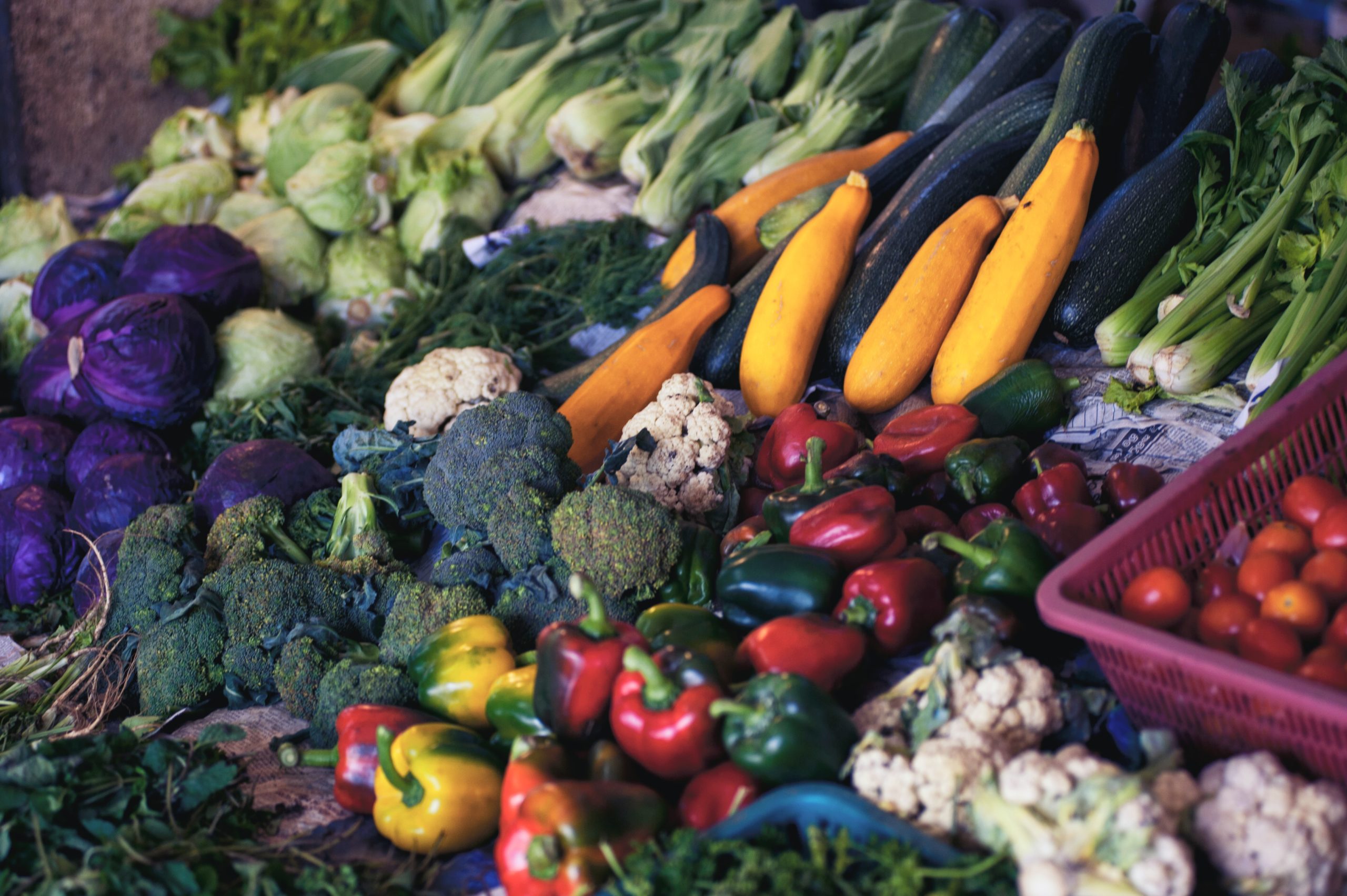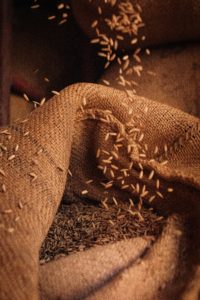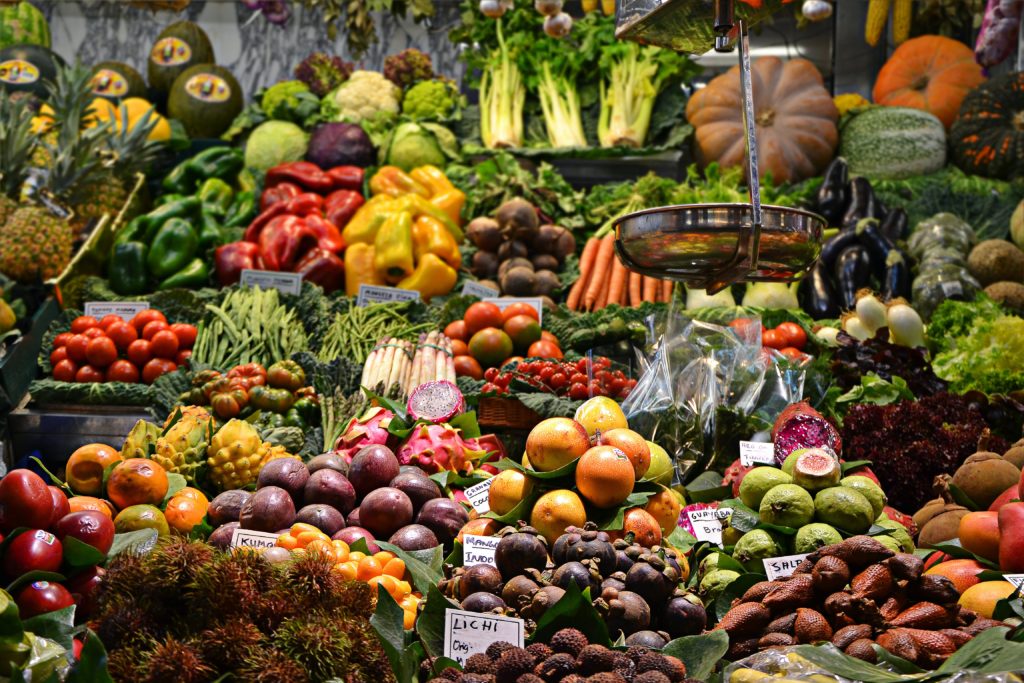Why is this important?
Based on the carbon footprint, organisations should identify food items with the highest relative and absolute emissions and focus their efforts on those. The sourcing strategy for food should be reviewed in close collaboration with nutritionists and staff on the ground in order to identify opportunities for switching to low-carbon food options, such as replacing meat with plant-based proteins, reducing rice sourcing and switching to alternatives like pulses.
The production of food is estimated to produce between 21 and 37% of overall anthropogenic emissions.(1) For aid organisations, food is often mostly sourced for beneficiaries. This is also typically the area with the highest impact on the footprint – due to the large quantities of food sourced. Other examples of food sourcing are the canteen, catering at events, or business lunches. Whilst the impact of food choices in these areas on the overall footprint might be comparatively little, it can make a strong contribution to changing eating habits.
What is the solution?
Adopting a low-carbon diet is an effective strategy to help fight climate change. This will not only reduce the impact of diets on the environment but also support local economies, promote better health, and signal an increasing demand for structural change to producers. A low-carbon diet entails reducing meat and dairy products, prioritising seasonal and local products, eliminating food waste, minimising processed foods and choosing low packaging options.(2)
Key actions
-
#1 Prioritise
Identify food items with the largest absolute and relative impact on the carbon footprint.
-
#2 Identify potential alternatives
Use publicly available data (see below) to identify potential low-carbon alternatives.
-
#3 Increase sourcing of plant-based options
Reduce animal-based products when possible (especially ruminant meat: beef, sheep, and goat) and increase plant-based options.
-
#4 Diversify rice sourcing
At least partly replace rice with less carbon-intensive alternatives, such as pulses, maize, wheat, ideally sourced locally or regionally.
-
#5 Engage with key internal stakeholders
Involve nutritionists and staff in close contact with beneficiaries to ensure a nutritious and balanced diet and culturally acceptable choices when selecting alternative options.
-
#6 Streamline the procurement process
Integrate carbon data on key food items into the food procurement decision-making process.
-
#7 Increase plant-based options in the canteen
Integrate criteria to increase the percentage of plant-based options in contracts with the service provider for the canteen and caterers.

To consider
-
Potential co-benefits
- Positive health impact through reduced meat consumption and diversification of diets
-
Success conditions
- Internal awareness-raising on health, environmental and climate impacts of food sourcing
-
Prerequisites & specificities
- Availability of alternatives in the required quantity
-
Potential risks
- Potential impacts on the supply of nutrients to beneficiaries need to be considered in close collaboration with nutritionists
Although we explore a range of scenarios, we identify reductions in consumption of ruminant meat (beef, sheep, and goat) as the most promising strategy for reducing land requirements and GHG emissions—while also achieving health benefits. (…) by counting the full consequences of diets for land use, we find that diets in general—and consumption of ruminant meat in particular—are even more significant for GHG mitigation than commonly understood.
World Resource Institute, 2019, (11)
Tools and good practices
-
Graphic: emissions per kg of selected food items
The graphic provides an overview of greenhouse gas emissions per kg of food item
Explore here -
Graphics: emissions per calorie and protein consumed
The WRI report features different graphics that show the impact of a variety of food items per calorie and protein
Explore here -
ADEME Base Carbone: Emission factors per food item
A database with emission factors, including for food items (requires registration, free of charge).
Explore here -
Sustainable Rice Platform: Certification
The Sustainable Rice Platform runs a sustainability certification scheme for rice
Explore here
To go further
-
World Resource Institute, Creating a Sustainable Food Future. A Menu of Solutions to Feed Nearly 10 Billion People by 2050, 2019
A comprehensive report on the impacts of food production and in-depth discussion of solutions to tackle the environmental and climate impact of agriculture.
Explore here
Featured
Procurement

Food items

Rice

Plant-based proteins

Sources
(1) GIEC, ‘Climate Change and Land’, GIEC, 2019, Available here, (accessed 4 September 2025).
(2) Lowly Food, ‘What is the low carbon diet’, Lowly Food, Available here, (accessed 4 September 2025).
(3) Searchinger, T., et al., ‘Creating a Sustainable Food Future’, World Resource Institute; 2019, Available here, (accessed 4 September 2025).
(4) Searchinger, T., et al., ‘Creating a Sustainable Food Future’, World Resource Institute; 2019, Available here, (accessed 4 September 2025).
(5) Smoth P., et al., ‘Agriculture, Forestry and Other Land Use (AFOLU)’, IPCC, Available here, (accessed 4 September 2025).
(6) Ecotoxicologie, ‘Comment réduire l’empreinte carbone de mon alimentation’, Ecotoxicologie, 2021, Available here, (accessed 4 September 2025).
(7) Commission Européenne, ‘Criteria for Food, Catering Services and Vending Machines’, Commission Européenne, 2023, Available here, (accessed 4 September 2025).
(8) Procura+ Network, ‘Helsinki’, Procura+ Network, Available here, (accessed 4 September 2025).
(9) Unilever, ‘Improving our offering for healthier diets’, Unilever, Avaiable here, (accessed 4 September 2025).
(10) UNESCAP, ‘Green Meetings: Guide for Participants’, UNESCAP, Available here, (accessed 4 September 2025).
(11) Searchinger, T., et al., ‘Creating a Sustainable Food Future’, World Resource Institute; 2019, Available here, (accessed 4 September 2025).
Acknowledgements
Last updated 24th of October 2025.
Share your success stories, suggestions, and comments with us! contact@climateactionaccelerator.org
Cover photo © Jacopo Maia/Unsplash.
